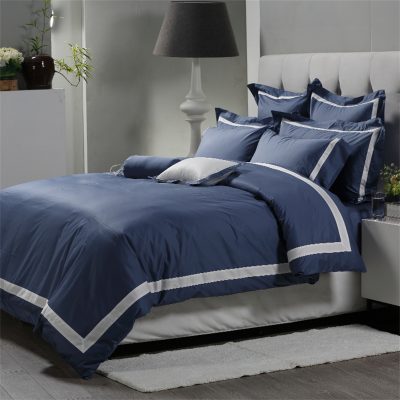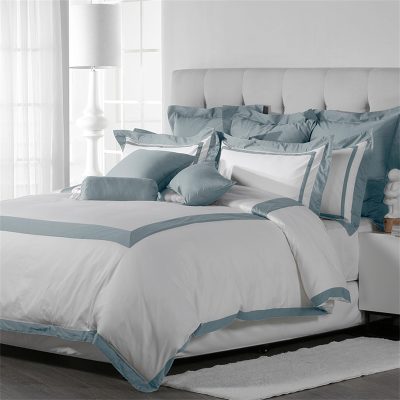What are the fabric structures of hotel textiles?
The basic structure of the fabric is divided into three types: plain weave, twill weave and satin weave. The thickness of the yarn used in the fabric and the warp and weft density of the fabric:
The thickness of the yarn is generally expressed by number, yarn count (English S), denier (code D), if expressed by number: the larger the number, the thicker the yarn; if expressed by the count: the smaller the value, The thicker the yarn. Generally, 60S-80S is used for clothing, and 30S-45S is used for bedding.
Warp and weft density: how many yarns are there in 10cm warp or weft, or how many yarns are in an inch (2.54cm). Commonly used 30s yarn 68*68, 30s yarn 78*65, 40s yarn 110*90, 40s yarn 110*80, 40s yarn 90*90 cotton yarn is divided into combing and carding: combing: total stalks above 29mm Very uniform, smooth, clean and free of impurities. Carding: The yarn has uneven thickness and impurities (black spots).
Generally, the density of warp and weft is more than 180 is called high density, and the density of less than 110 is called low density.
Except for single-hole fiber pillows, others can be washed. But because of its thickness, it must be fully dried. It will not affect reuse. It is best to use pillowcases at ordinary times to avoid the trouble of washing. At the same time, light-colored products should be washed separately from dark-colored products to avoid mutual staining. After cleaning, dry it in an outdoor ventilated place. If you want to use a dryer, please choose low-temperature drying. The temperature should not exceed 35℃ to avoid excessive shrinkage.




















